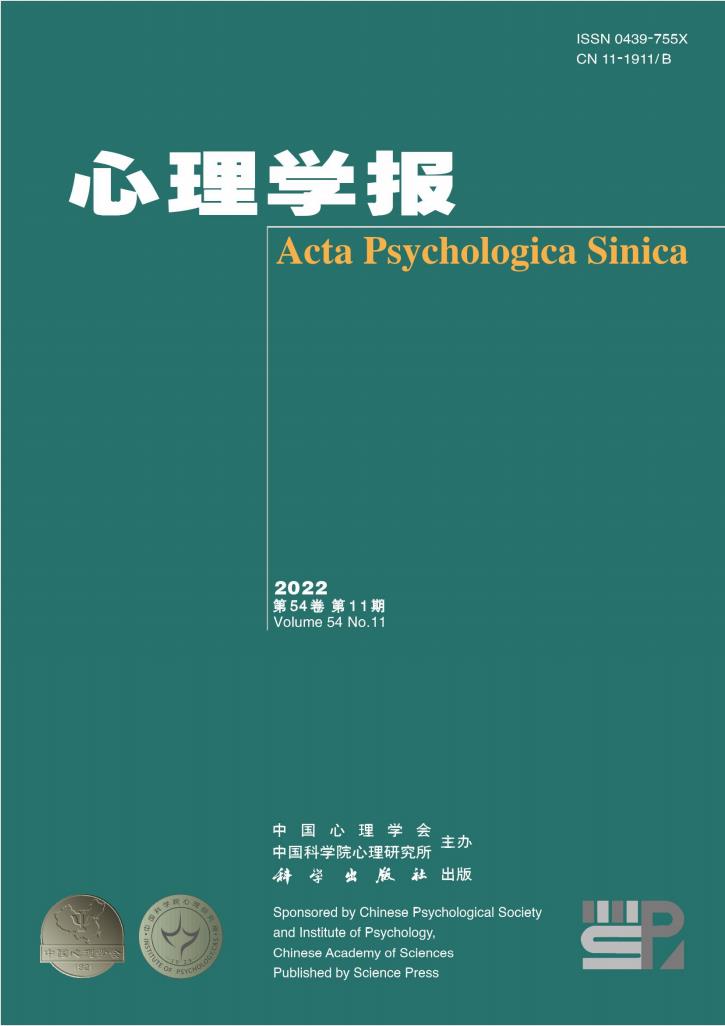试验史对跨模态非空间返回抑制的影响
IF 1.3
4区 心理学
Q3 PSYCHOLOGY, MULTIDISCIPLINARY
引用次数: 0
摘要
先前的实验室研究表明,个体在当前试验中的反应可能会受到先前试验的影响,这被描述为试验史的影响。现有研究表明,视觉空间返回抑制(IOR)存在试验历史效应,一些研究表明,刺激方式的变化也会影响反应时间(RT)。本研究采用“主-中性线索-目标”范式来检验跨模态、非空间IOR中的试验历史效应,并试图降低试验历史效应。在两个实验中,我们主要操纵了当前试验中的线索目标模式(听觉-视觉模式与视觉-听觉模式)、当前试验的线索有效性(提示与未提示)和前一试验的线索合法性(提示和未提示)。实验1招募了30名参与者。视觉主线索是半径为2°视角的红色或蓝色圆盘,听觉主线索是75 dB的汉语语音。视觉中性提示是一个半径为2°视角的绿色圆盘,听觉中性提示是75 dB(\lv\)的汉语语音;视觉目标是半径为2°视角的红色或蓝色圆盘,听觉目标是75 dB(\hong\和\lan\)的汉语语音。在实验过程中,每次试验都从监视器中心400毫秒的注视交叉开始,300毫秒的视觉或听觉主要提示之后是200毫秒的注视十字。在300毫秒的视觉或听觉中性提示之后,另一个注视交叉出现300毫秒,然后出现300毫秒的听觉或视觉目标。参与者被要求在1500毫秒内辨别目标的身份(即彩色圆盘或“hong”或“lan”的发音)。在空白屏幕上进行1500毫秒的试验间隔(ITI)后,开始下一次试验。实验2中招募了29名参与者,ITI为4500ms,其他参数与实验1中的参数相同。关于RT的结果,实验1表明,当前试验中提示目标的RT大于未切割目标的RT,这是一种基于颜色的非空间IOR。当前试验中的IOR效应大小显示了前一试验中的线索有效性和当前试验中线索-目标模式之间的相互作用。当当前试验是视觉线索和听觉目标时,有效线索试验后当前试验的IOR效应大小大于先前试验中无效线索的IOR效果大小;然而,在当前试验中,当线索是听觉的,而目标是视觉的时,IOR效应大小没有差异。此外,对各试验中目标模态的分析表明,在当前的视觉提示试验中,前一试验中的有效提示(而非无效提示)可以诱导更大的IOR效应大小。与实验1相比,实验2中使用了更长的ITI(4500ms),结果表明,在当前试验中,视觉线索和听觉线索的IOR效应大小存在差异。当前试验中的IOR效应大小不受先前试验的有效性或当前试验是否有听觉线索或视觉线索的影响。这些结果表明,跨模态非空间IOR的试验之间存在相互作用,但这种影响与线索-目标模态有关。试验之间不仅存在线索有效性效应,而且存在目标模态转换效应。增加试验之间的时间间隔可以减少上一次试验对当前试验中IOR效果大小的影响。本文章由计算机程序翻译,如有差异,请以英文原文为准。
Effects of trial history on cross-modal non-spatial inhibition of return
Previous laboratory studies have shown that an individual’s response in the current trial can be influenced by a previous trial, and this has been described as an effect of trial history. Existing studies have shown that there is a trial history effect with visual spatial inhibition of return (IOR), and some studies have shown that changes in stimulus modalities also affect reaction times (RTs). The present study used the “prime-neutral cue-target” paradigm to examine the trial history effect in cross-modal, non-spatial IOR and attempted to decrease the trial history effect. In two experiments, we mainly manipulated the cue-target modalities in the current trial (auditory-visual vs. visual-auditory modalities), cue validity in the current trial (cued vs. uncued) and cue validity in the previous trial (cued vs. uncued). Thirty participants were recruited in Experiment 1. The visual prime cue was a red or blue disk with a radius of 2° visual angle, and the auditory prime cue was a verbal sound in Chinese at 75 dB (\hong\ or \lan\). The visual neutral cue was a green disk with a radius of 2° visual angle, and the auditory neutral cue was a verbal sound in Chinese at 75 dB (\lv\); The visual target was a red or blue disk with a radius of 2° visual angle, and the auditory target was a verbal sound in Chinese at 75 dB (\hong\ and \lan\). During the experiment, each trial began with a 400 ms fixation cross in the centre of the monitor, and a 300 ms visual or auditory prime cue was followed by a 200 ms fixation cross. After the 300 ms visual or auditory neutral cue, another fixation cross was presented for 300 ms, and then a 300 ms auditory or visual target was presented. The participants were asked to discriminate the identity of the target(i.e., either a colour disk or vocalization of \hong\or \lan\) within 1500 ms. Following a 1500 ms intertrial interval (ITI) with a blank screen, the next trial was initiated. Twenty-nine participants were recruited in Experiment 2, the ITI was 4500 ms, and the other parameters were identical to those in Experiment 1. Regarding the RTs results, Experiment 1 showed that the RTs for cued targets in the current trial were larger than RTs for uncued targets, which was a colour-based non-spatial IOR. The IOR effect size in the current trial showed an interaction between the cue validity in the previous trial and the cue-target modality in the current trial. The IOR effect size on the current trial after a valid cue trial was larger than the IOR effect size with an invalid cue in the previous trial when the current trial was a visual cue and auditory target; however, there was no difference in the IOR effect size when the cue was auditory, and the target was visual in the current trial. Furthermore, the analysis of the target modality across trials revealed that the valid cue, but not the invalid cue, in the previous trial, could induce a larger IOR effect size in the current trial with visual cues. A longer ITI (4500 ms) was used in Experiment 2 compared to Experiment 1, and the results showed that there was a difference in the IOR effect size in the current trial between the visual cues and auditory cues in the current trial. The IOR effect size in the current trial was not influenced by the validity of the previous trial or whether the current trial had auditory cues or visual cues. These results suggested an interaction between trials on cross-modal non-spatial IOR, but the effect was related to the cue-target modality. There was not only the cue validity effect across trials but also the target modality switch effect between trials. Increasing the time interval between trials can reduce the effect of the previous trial on the IOR effect size in the current trial.
求助全文
通过发布文献求助,成功后即可免费获取论文全文。
去求助
来源期刊

心理学报
Psychology-Psychology (all)
CiteScore
1.70
自引率
13.30%
发文量
1612
期刊介绍:
Acta Psychologica Sinica (ISSN 0439-755X) is a scholarly journal sponsored by the Chinese Psychological Society and the Institute of Psychology, Chinese Academy of Sciences, and published monthly by the Science Press.
Acta Psychologica Sinica has been included in many important national and international indexing systems such as SCOPUS (Elsevier), ESCI (Web of Science), PsycINFO (APA), CSCD. It is the flagship journal of the Chinese Psychological Society that publishes peer-reviewed original empirical studies and theoretical articles spanning the entire spectrum of scientific psychology.
Acta Psychologica Sinica publishes high-quality research that investigates the fundamental mechanisms of mind and behavior and aims to deliver scientific knowledge to enhance our understanding of culture and society. It welcomes submissions of manuscripts reporting research that is up-to-date, scientifically excellent, and of broad interest and significance.
 求助内容:
求助内容: 应助结果提醒方式:
应助结果提醒方式:


